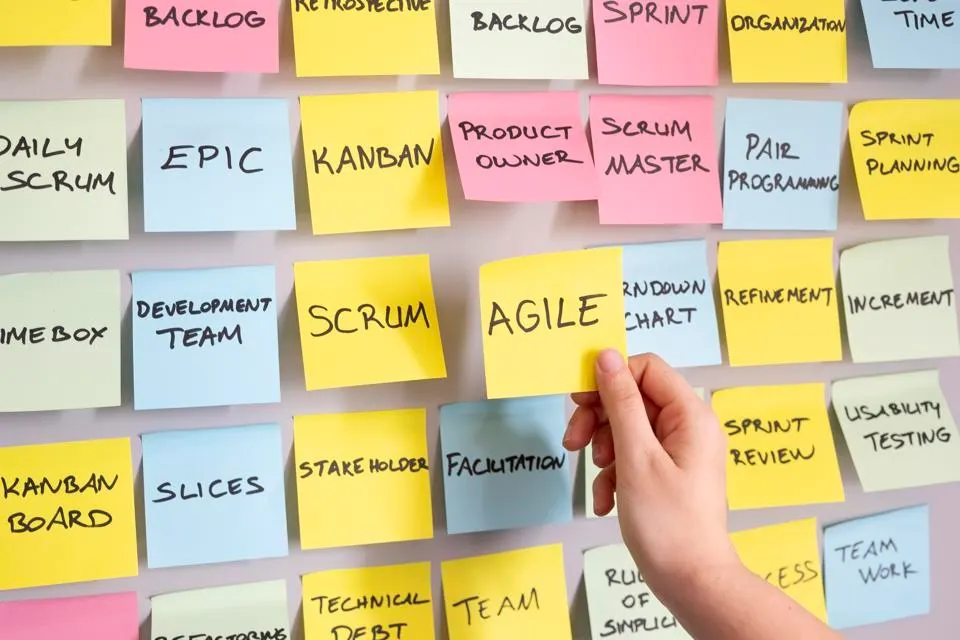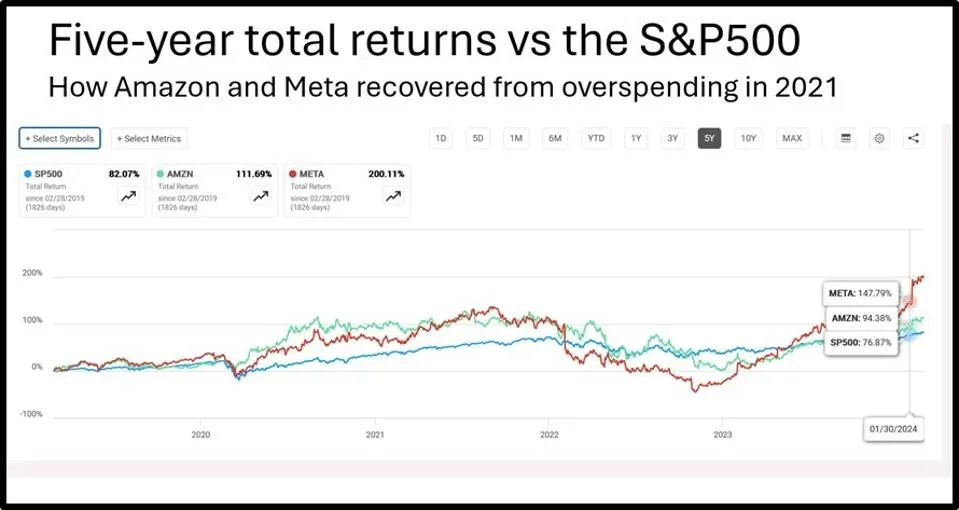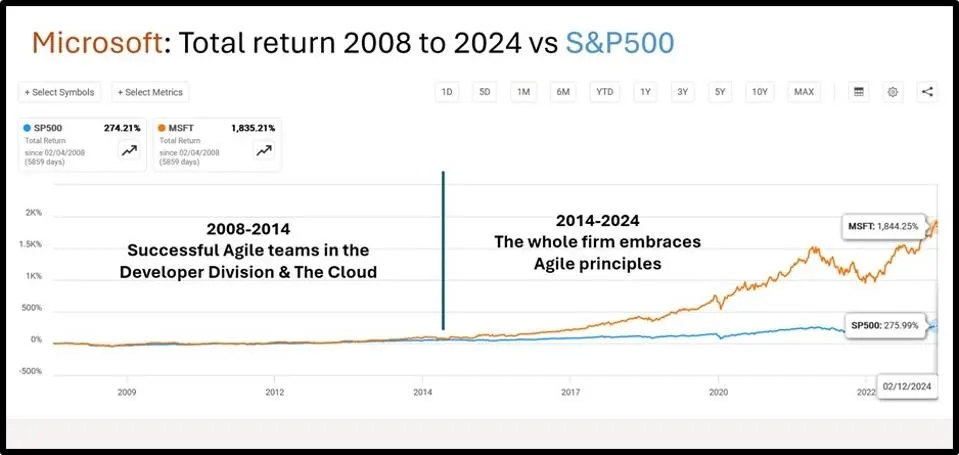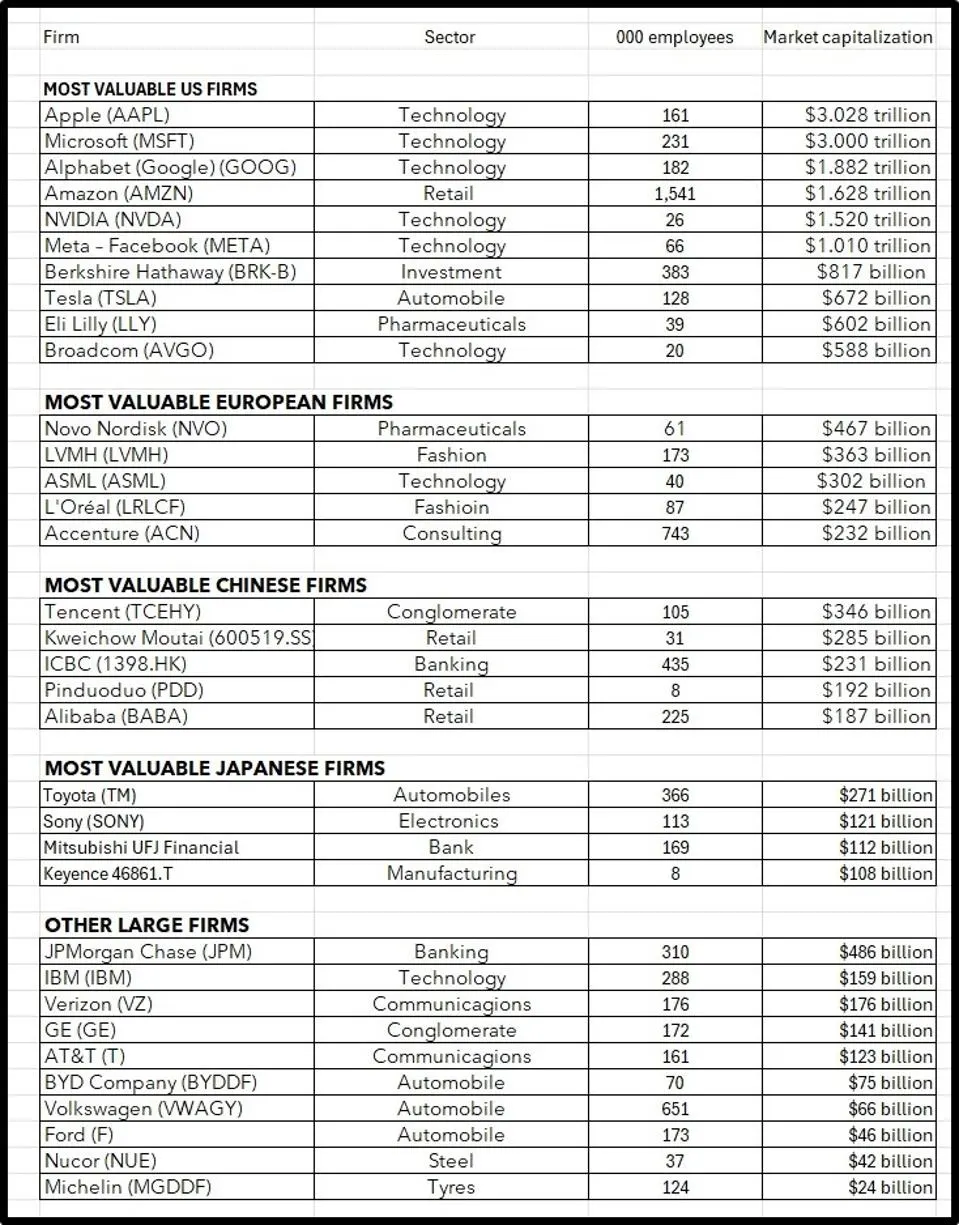How To Become Agile—Without The Agile Label
Becoming Truly Agile Requires Multiple Steps—But Not Necessarily The Agile Label
by Steve Denning

Labels for Agile Methods and Methodologies - GETTY IMAGES
Despite the apparent setbacks of Agile methodologies as described in Part 1 of this article, Agile mindsets and principles are guiding and driving the processes and methods of many firms and helping to generate trillions of dollars in customer value. Often, this is done without using the Agile label to describe what is being done.
Meanwhile, although many software development teams are having success with Agile methods and practices in producing working software, many firms, organizations and institutions that have yet to embrace the Agile mindset and values and are not generating major business returns from Agile software development.
If we were to follow Peter Drucker’s 1997 advice and “look out the window and see what's visible—but not yet seen," we might see that a paradigm shift in management has occurred, implying major management change for most firms over the coming decade.
Where to should the Agile movement go from here? The answer depends on where each organization finds itself.
1. The 20% Of Firms That Already Embody Agile Mindsets And Methodologies
One set of firms (perhaps 20% of all public firms) has embodied and embraced genuine Agile principles and practices, often without using the Agile label (as explained in Part 1 of this article). Such firms are often using Agile mindsets to inspire, guide and upgrade their structures, processes and methods, Typically, these firms are growing consistently faster than the S&P500 and are generating significant customer value. These firms should keep going and need not worry about the Agile label. They should however remain constantly vigilant of the risk of sliding backwards into traditional management paradigm.
2. The Special Case Of The Trillion Dollar Winners
Within the first group of firms, there is the special case of the six firms that currently have more than one trillion dollars in market capitalization, namely: Alphabet, Amazon, Apple, Meta, Microsoft, and Nvidia. (See Figure 3) These firms risk being seen by the public as 21st century "Robber Barons". Even though they are creating massive value for customers and society, their sheer size and power makes them potential targets of public envy, scorn, and suspicions of wrongdoing. The issues they face include:
- Any perceived flaws in their performance, such as intrusions in privacy, unfair treatment of workers or customers, harm to the environment, or creating addiction in children, risk being seized and acted on with aggressive regulatory actions that may go far beyond the cited problem.
- Any failure to exemplify noblesse oblige, i.e. the inferred responsibility of privileged people to act with generosity and nobility toward public causes and those less privileged also risks encouraging regulatory action.
- Any shortfall in maintaining a fast pace of innovation risks being viewed harshly by the stock market. Just this week, financial press criticism of alleged innovation failures at Apple and Alphabet was widespread.
Where firms make big bets and stumble, they must demonstrate agility and recover, as Amazon and Meta did in the last three years.

Figure 1: Five-year total return of Amazon and Meta - STEVE DENNING; SEEKING ALPHA
3. The Agile Laggards That Have Yet To Embody Agile Mindsets and Methods
For the laggards—perhaps 80% of public firms—that have yet to embrace and embody both Agile mindsets and Agile processes, they should consider the implications of maintaining a modus operandi that is out of step with the emerging management paradigm. They should consider the risk of significant disruption over the coming decade and evaluate the possibilities either of a transition journey towards the new management paradigm or of the need to ready their firm to be acquired or wound up.
For those firms opting for the transition journey, they will need to consider taking seven steps:
1) Accepting that new mindsets are needed throughout the organization as part of the emerging management paradigm. Success at the level of software development teams with Agile practices is unlikely by itself to yield significant business gains. See for example Microsoft’s meager returns to the business of its successful Agile teams in 2008-2014, compared to the massive gains to the business once the whole firm embraced Agile mindsets that led methodologies at the team level. (Figure 2)

2) In cases where top management support for change is not yet forthcoming, lower levels of the firm should consider pursuing the new mindsets and practices, until top management does come on board. Executives should recognize the reality that unless and until the whole firm embraces the new management paradigm, business gains are likely to be meager. That doesn’t mean they can’t get started on the inevitable journey.
3) Once Agile-like mindsets have been embraced by the firm’s top management team, the firm should ensure that they are driving change and upgrading processes in all parts of the firm, not just software development. It should be recognized that the adoption of Agile-like mindsets and processes throughout a large firm will take some years.
4) In the process, firms should de-emphasize Agile certifications, individualized Agile brands, and Agile “frameworks,” Firms should recognize the pointlessness of re-litigating all the battles of the last quarter century between traditional management and Agile software development. Firms should recognize the need to join together to implement the management paradigm shift at all levels.
5) Continue to innovate and evolve management methods and practices to meet the firm’s own needs, particularly in terms of creating fresh customer value.
6) Recognize that the goal of producing “working software”is meaningful for software development teams but is no more than an interim step towards the firm’s goal of creating value for customers.
7) Obsessively measure progress in creating customer value.
4. Business Schools
By and large, the current core curricula of business schools train students in the methods and processes of. the management paradigm of the 20th century. In the short term, the relationship between business schools and firms in decline is mutually supportive, but its sustainability warrants a fresh examination.
5. The Agile Software Development Eco-sphere
Agile conferences, Agile certification systems, and Agile consultancies should also take a hard look at their modus operandi and their future. They must realize that Agile methodologies alone, despite individual team successes, are often failing in terms of generating business value. They should learn why; and start understanding and embracing Agile mindsets, values and culture and their role in driving Agile methodologies and business success. An initiative along these lines is already under way to re-imagine Agile.
One option would be to continue as now, promoting the Agile label, supporting genuinely Agile software development, seeking to identify and shame instances of “Agile in name only,” while pushing cautiously for greater “business agility.”
A bolder approach would be to recognize that a new management paradigm is under way, in which the Agile-labelled practices have become a distraction as much as an answer. They may wish to salute the brilliant insights of the Agile Manifesto while de-emphasizing Agile-specific terminology. As Agile-Manifesto-signatory Jim Highsmith explains, “There is no one-size fits all solution but rather a dynamic mindset that adapts and evolves. It invites us to embrace change, question our assumptions, and continuously seek improvement."

Figure 3: Most valuable US, European, Japenese and Chinese firms - STEVE DENNING; SEEKING ALPHA
And read also:
- The Management Paradigm Driving The World’s Most Valuable Firms
- Why the World's Most Valuable Firms Are So Agile?
References:
Original article from Forbes, written by Steve Denning and authorized to be published in the World Management Agility Forum by Steve Denning.
Original Article: https://www.forbes.com/sites/stevedenning/2024/02/29/how-to-become-agile-without-the-agile-labels/?sh=6b00b9966620